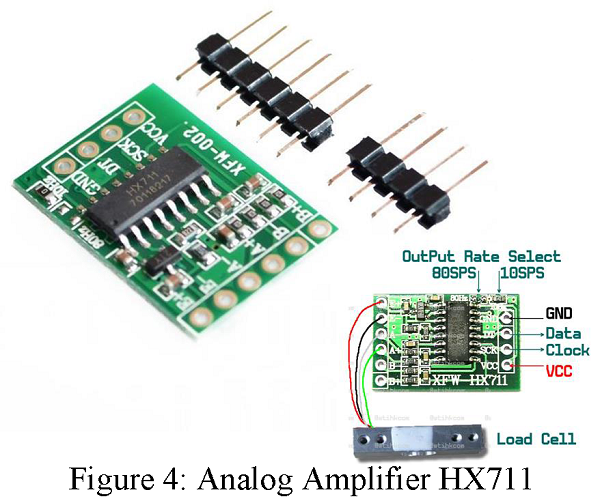[ are two wired organized metal foil or wires that are set up in such a way that the resistance changes when it is compressed or stretched. When a strain gauge is placed on something (usually metallic in nature) its resistance changes based on the stress experienced by that something. Forefront tmg 2010 keygen generator ableton. When a single strain gauge is hooked up to a metallic cell, we are calling that a, which have three output wires. Usually has four strain gauges hooked up in a wheatstone bridge formation, which have four output wires.
Buy Degraw - 4 pcs 50kg Load Cells and HX711 Combo Pack Kit Load Cell Amplifier ADC Weight Sensor for Load Cell Arduino Bathroom Scale kit. LCD1602 2004 20x4 LCD Display Adapter IIC//TWI/SPI/I2C Serial Interface Module Shield. 4 x Load cell 0-50KG; 1 x HX711 24BIT Precision ADC Module on breakout.
For more information on load cells, strain gauges, and wheatstone bridges see our.]. For smaller, push-button or disc load cells, you will want to make sure to screw in the disc to a bottom plate (or surface you are measuring force against), and center the beam, plate, or whatever else you are wishing to measure the force of onto the 'button' on the top. Usually another plate with a hole is used to make sure whatever you are measuring is hitting the same spot on the load cell each time, but it is not necessary. Make sure to read the datasheet for the load cell you are using and get the correct screws to fit into it. • Note: If you are hooking together four of the using the board, you should position the four load sensors equidistant from each other, just like the bathroom scales shown in this tutorial. Load cell measurements can be off by +/- 5% due to a range of things including temperature, creep, vibration, drift, and other electrical and mechanical interferences. Before you install your scale, take a moment and design your system to allow for easy calibration or be able to adjust the code parameters to account for these variations.
The HX711 Load Cell Amplifier accepts five wires from the load cell. These pins are labeled with colors; RED, BLK, WHT, GRN, and YLW. These colors correspond to the conventional color coding of load cells, where red, black, green and white wires come from the strain gauge on the load cell and yellow is an optional ground wire that is not hooked up to the strain gauge but is there to ground any small outside EMI (electromagnetic interference). Aggiornamento firmware modem alice gate voip 2 plus wi-fi. Sometimes instead of a yellow wire there is a larger black wire, foil, or loose wires to shield the signal wires to lessen EMI. Here we have a large black wire, some loose wires, and foil and loose wires respectively as EMI buffers In General, each load cell has four strain gauges that are hooked up in a wheatstone bridge formation as shown above. The four wires coming out from the wheatstone bridge on the load cell are usually: • Excitation+ (E+) or VCC is red • Excitation- (E-) or ground is black.
• Output+ (O+), Signal+ (S+)+ or Amplifier+ (A+) is white • O-, S-, or A- is green or blue Some load cells might have slight variations in color coding such as blue instead of green or yellow instead of black or white if there are only four wires (meaning no wire used as an EMI buffer). You might have to infer a little from the colors that you have, but in general you will usually see these colors. Example of a single strain gauge, or load sensor. Here RED is the center tap For load sensors, there isn't a set color coded standard. Comparing the scale pictured above with the load sensor schematic, while the black wires matched, the red and white wires were swapped. Also, only two of the four sensors used a white wire for the 'center tap' of the load sensor, the other two used green. I connected the black wires to '-', the red to '+', and the white and green wires to 'C'.
To determine how to hook up your single strain gauge load cells to the combinator, measure the resistance between the three wires. You should find a larger resistance (close to double) between a pair. In our example the resistance between red and black was 1.6 kΩ, and the resistance between white/green and red was 800 Ω. Therefore, the center tap to the strain gauge is the white/green wire. The center tap or center pin of your strain gauge connects to the 'C' pin on the combinator. The larger resistance wires (red and black in this example) connect to the '+' and '-' pins on the combinator.
